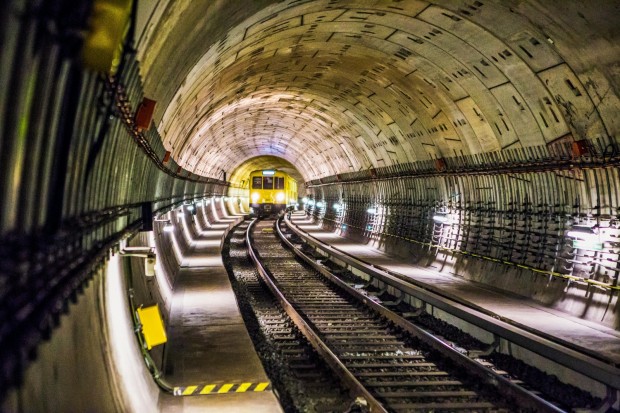The groundbreaking Tunnel Boring Machines (TBM) operation in China has begun constructing the world's longest underground high-speed tunnel. It has been stated that these two TBMs are launched from the opposite direction, which is an advanced phase in tunnel construction.

(Photo : Pexels/anna-m. W. )
Tunnel Boring Machines Operation
On Thursday, May 16, to begin construction on the Jintang subsea tunnel of the recently constructed Ningbo-Zhoushan Railway, two super-large diameter slurry TBMs, produced by China Railway Construction Heavy Industry Corporation Limited (CRCHI), were launched in Ningbo and Zhoushan from opposing directions. Beginning with the concurrent turning of the cutter head of the two TBMs, it is reportedly an advanced phase for the world's most extensive subsea high-speed railway tunnel.
The tunnel is located under the Jintang central navigation channel, which has a capacity of 100,000 tons. Departing from Ningbo and Zhoushan, the two TBMs commenced excavation in the opposite direction, reaching the seabed with a 20mm error threshold.
It will be the first time in the world that super-large diameter shield machines have been docked and disassembled in the ocean. Compared to the standard cutter head, the heavy pressurized cutter head design, the addition of seventy disc cutters, and the weight increase of more than one hundred tons are all essential features. The intelligent monitoring system of the disc cutters guarantees maximum tunneling efficiency, enhancing the cutter head's resistance to wear and ability to shatter rocks.
Accordingly, the Jintang subsea tunnel of the Ningbo-Zhoushan Railway spans 16.18 kilometers from the western Yinzhou District of Ningbo City to the eastern Jintang Town of Zhoushan City, with a maximum buried depth of 78 meters. The TBM section of the tunnel is 11.2 kilometers in length. With a maximal excavation diameter of 14.57 meters, the 'Dinghai' and 'Yongzhou' TBMs measure a combined length of 135 meters.
Also Read: The Critical Role of Efficient Roof Drainage in Preserving Your Building's Structural Integrity
Longest Subsea High-Speed Railway Tunnel Construction
Zhoushan and Ningbo are connected via the Ningbo-Zhoushan Railway, situated in the province of Zhejiang. The 77-kilometer-long, 250 km/h-capable railway is anticipated to be fully operational by 2028.
Once the system is operational, traveling from Hangzhou to Zhoushan will take eighty minutes, while the journey from Ningbo to Zhoushan will take only thirty minutes. This development will end the Zhoushan Archipelago's longstanding absence of railways. Moreover, the part of the Ningbo-Zhoushan Railway that runs from Jintang Island to Zhoushan Island is planned as a massive bridge with a primary span of 1,488 meters.
On the other hand, the segment that runs from Ningbo Beilun to Jintang Island is designed as an underwater tunnel. The Seikan undersea rail tunnel in Japan and the Channel Tunnel, which spans around 38 kilometers and connects Britain and France, are considerably longer than the Jintang undersea tunnel in terms of length alone. However, at top driving speed, neither of the preliminary two tunnels meets the requirements of high-speed rail.
When it comes to the constructions that are currently being carried out on the mainland, such as the Shantou Bay undersea tunnel on the Shantou-Shanwei High-speed rail and the Zhanjiang Bay undersea tunnel on the Guangzhou-Zhanjiang High-speed rail, amongst others, even though they are designed to travel at a speed of 350 kilometers per hour, which is the standard for high-speed rail, they are all shorter than ten kilometers in length.
Related Article: Hafeet Rail Construction to Create Efficient, Reliable Transportation Linking UAE and Oman







